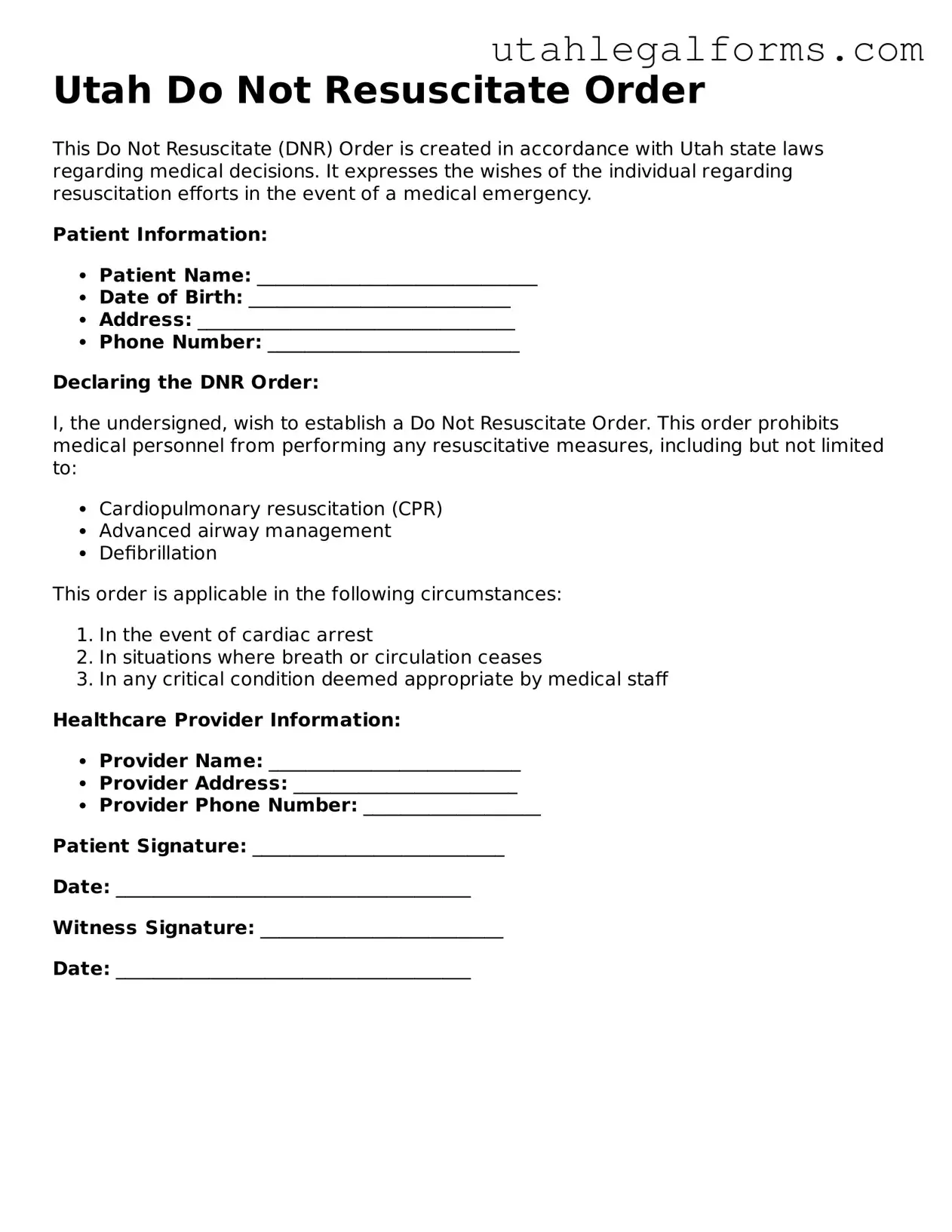Official Do Not Resuscitate Order Form for Utah State
A Do Not Resuscitate (DNR) Order is a legal document that allows individuals to express their wishes regarding medical treatment in the event of a life-threatening situation. In Utah, this form ensures that a person's preference to forgo resuscitation efforts is clearly communicated to healthcare providers. Understanding and completing this form can provide peace of mind, ensuring that your healthcare choices are respected.
Ready to take control of your medical decisions? Fill out the DNR Order form by clicking the button below.
Access Do Not Resuscitate Order Now
